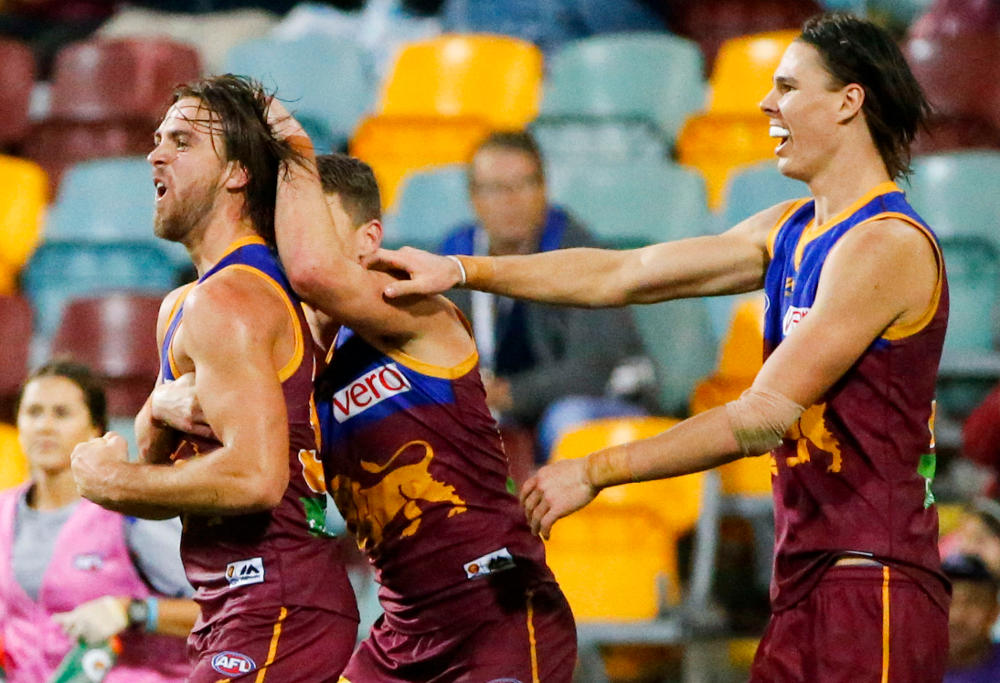It’s a good thing the football competition is in a state of wild unpredictability, because lately there haven’t been too many headline-grabbing controversies.
Last week, the jumper-punch was about as big as it got. The only other contender for the week’s desperate headline award was State of Origin.
You know things are quiet when that old chestnut bobs up. Commenting as one occasionally accused of a misty-eyed longing for aspects of a bygone game, I see no future for regular contests between the states.
The fact is, interstate football has never been particularly popular in Victoria, clearly the most populous of the AFL heartland states. That’s a bad start.
Back when I was a kid, the football states came together every four years for what was known as a carnival. That name is a bit misleading as it suggests something less than serious competition, and the carnivals were serious. But Victoria virtually always won, and won pretty easily.
Not only did the Vics win, they won with what were usually below full-strength teams. The reason for this was the reluctance of the VFL to excessively compromise its club competition, which usually continued for the fortnight of the carnival.
The Victorian team was thus chosen according to a quota system: no club being forced to give up so many players as to be severely weakened.
If further evidence is required of Victoria’s historic indifference to battles between the states, consider the Centenary Carnival in 1958.
That was the year the Australian game turned 100. A carnival was played as a celebration: in Melbourne, of course, because that was where it had all begun. The Victorian Football League actually took a two-week hiatus in deference.
What a great idea! Why, there were even night games at the old Lakeside Oval in South Melbourne, although the big matches were staged on the MCG.
And guess what? The people in football’s heartland state stayed away in droves. The two showpiece matches were the VFL’s games against South Australia and Western Australia on the MCG, played on the two Saturday afternoons of the Carnival.
The former fixture drew 33,063 and the latter 23,238. Those games apart, the largest crowd of the fortnight was 7,200 for the clash of traditional rivals, the VFL and VFA.
Yes, there has been an occasional upsurge of interest in the State of Origin concept, such as in 1989 when 92,000 attended a match between Victoria and South Australia at the MCG. But, generally, interest has been greater when the matches have been played outside Victoria. Apart from anything else, it gives the smaller states a better chance of winning.
So, there’s nothing to be too misty-eyed about at the loss of state-versus-state football. The reality is that interstate bragging rights are now determined by outcomes in the AFL. South Australia is currently flying, while WA is wobbly. Nowadays, the erstwhile second division states also have a stake.
The banana benders haven’t been faring well lately, but bobbed up with a couple of wins last week. NSW, meanwhile, now provides two highly competitive teams.

(AAP Image/Glenn Hunt)
Then there’s Tassie. And yes, without apology, I do become misty-eyed at the state of the game in my own state of origin. Back in 1958, Tasmania beat both WA and SA over a three-day period.
One hundred years into the code’s history, it ranked a solid equal-second in the nation with those two. And look at it now.
Yet, despite the fact that its local competitions have been rendered almost totally irrelevant by the AFL’s popularity, the state has continued to produce elite-level contributors.
Currently, on my quick count, it has 29 on AFL lists. It can also lay claim to three of the competition’s 18 coaches. Last weekend, the island state flew under the radar as usual but its stars soared high.
Highest of all went Jeremy Howe, with his incredible leap and mark on the Queen’s Birthday.
The ‘speccy’, the ‘hanger’, the ‘hover’… call it what you will, is the game’s ultimate crowd-pleasing skill. Howe is arguably the most prolific exponent since John Coleman in the 1950s. His name can now be mentioned among those few special players for whom it’s worth paying the admission.
Also, last weekend, the teams coached by Brendon Bolton, Rodney Eade, and Chris Fagan all won. First time it’s happened.
Each man is striving to turn the fortunes of clubs which have lately struggled. Then there was Liam Jones; a player who seemed destined for the scrap-heap but who starred against GWS and suddenly appears to have found new life.
This week it might be Jack Riewoldt or Ben Brown. Throw in Toby Nankervis, Tom Bellchambers, Grant Birchall, the Kolodjashnij twins, Aaron Hall, Mitch Robinson, Jimmy Webster, Mav Weller and so on, and Tasmania’s contribution lives on.
And its reward? Well, its taxpayers are forced to pay millions of dollars each year just to have a handful of games played on its grounds.
Meanwhile, the AFL continues to have no intention of granting the state its own team. Forget state of origin, Tasmania is football’s state of oblivion.






























































































